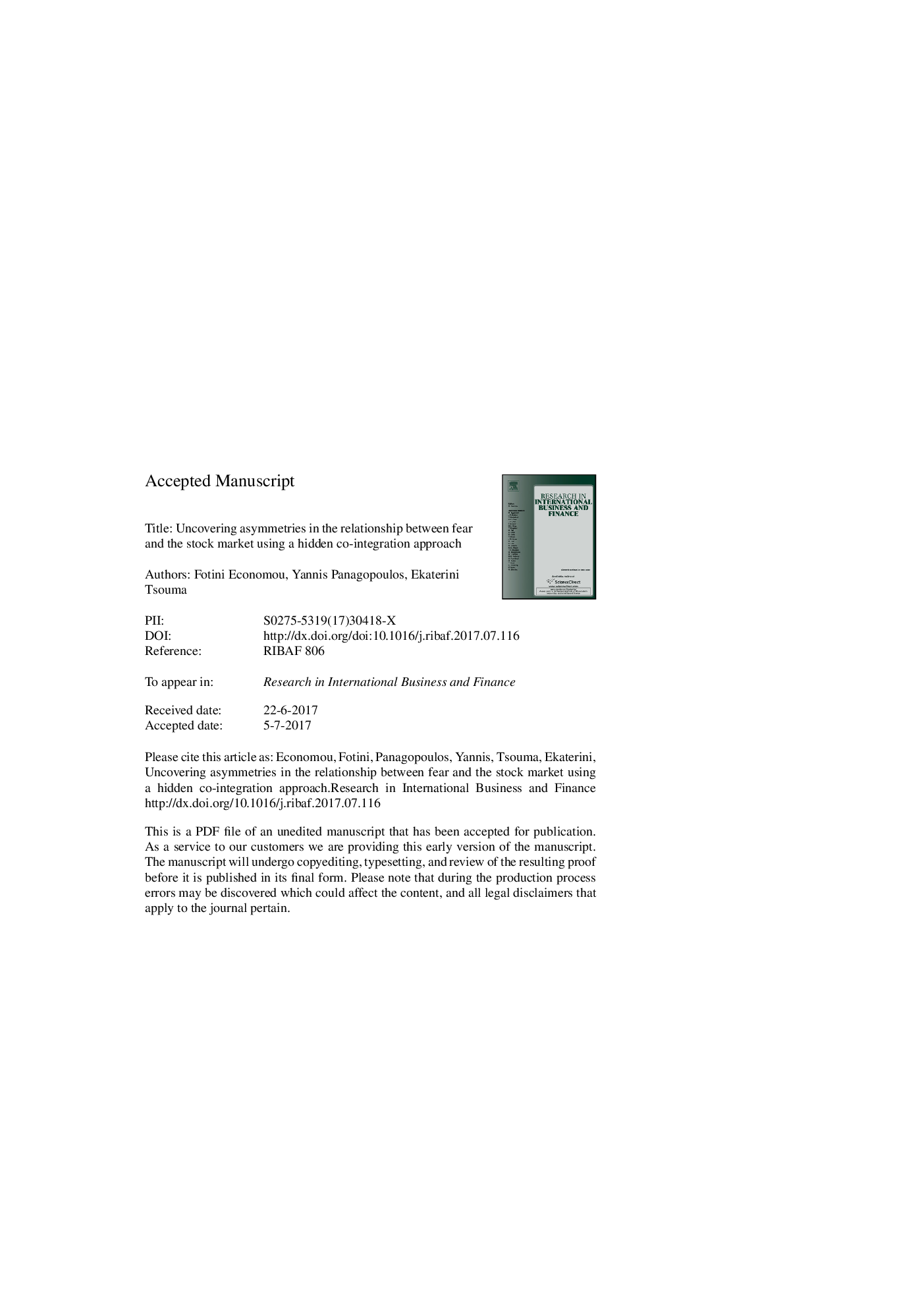| Article ID | Journal | Published Year | Pages | File Type |
|---|---|---|---|---|
| 7413986 | Research in International Business and Finance | 2018 | 33 Pages |
Abstract
In this paper we implement the methodological approach of hidden co-integration in order to examine the relationship between the fear index and the stock market index. To this end, we employ daily data of the S&P 500, FTSE 100 and DAX 30 stock market indices and their respective implied volatility indices, i.e. CBOE VIX, FTSE Volatility Index and VDAX New Volatility Index, for the 2000-2014 period. Our empirical results indicate overall asymmetry in the reaction of the fear indicator to stock market innovations for the US market. For the UK and Germany our findings suggest the existence of specific types of asymmetry concerning mainly the size and the time span of the adjustment process. The findings have important implications for asset allocation, active investment and hedging strategies.
Keywords
Related Topics
Social Sciences and Humanities
Business, Management and Accounting
Business and International Management
Authors
Fotini Economou, Yannis Panagopoulos, Ekaterini Tsouma,
